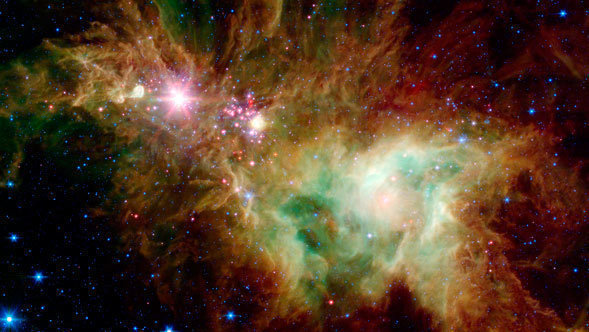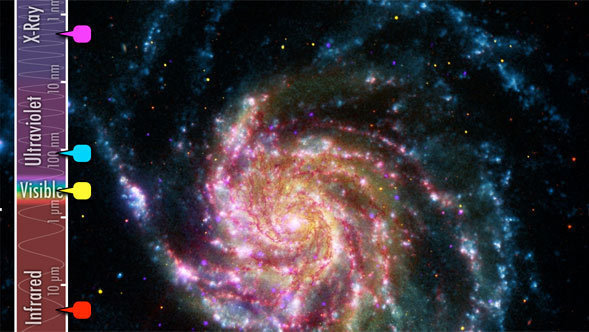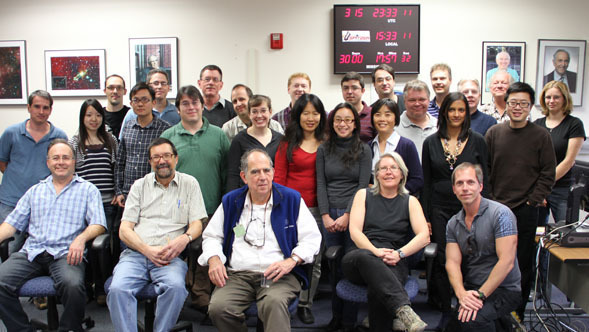
By Luisa Rebull | December 19th, 2011
Sometimes you get a project so big that one telescope just isn't enough. December is the month that a small army of telescopes on land and in space are all pitching in for a really big study that just can't be done any other way.
On Dec 3, we began a continuous 30-day observation of the star-forming region NGC2264. I'm part of this major international collaboration, with 41 investigators on the Spitzer program and numerous other participants around the world. In addition to NASA's Chandra and Spitzer missions, the French CoRoT mission, Canada's MOST mission, and half a dozen ground-based observatories are also part of this unique observing opportunity .
NGC 2264, sometimes called the Christmas Tree Cluster, has been observed with Spitzer before, but only once, a simple snapshot. Now, we will be taking many individual exposures of this same regions, looking to see how these young stars change. We are pretty sure, based on what we know from other clusters, that we will see some changing rapidly, and some changing more slowly, and we will see stuff in the regions around the star moving into our line of sight, between us and the star. But, what makes this observation so powerful is the number of telescopes and the diversity of wavelengths in which we are observing all at once. This is going to be key to understanding what is causing the variability. Is it really stuff in the disk that we're seeing? Or flares on the young star causing parts of the disk to heat up? Or something else entirely we haven't thought of yet?
It's very exciting, and a little intimidating, to be getting so much data – it's a veritable firehose of data. I am very much looking forward to getting wet!
 The Art Behind the Astro Pictures: Lecture Online
The Art Behind the Astro Pictures: Lecture Online
 11-11-11: At 3000 and Counting!
11-11-11: At 3000 and Counting!



